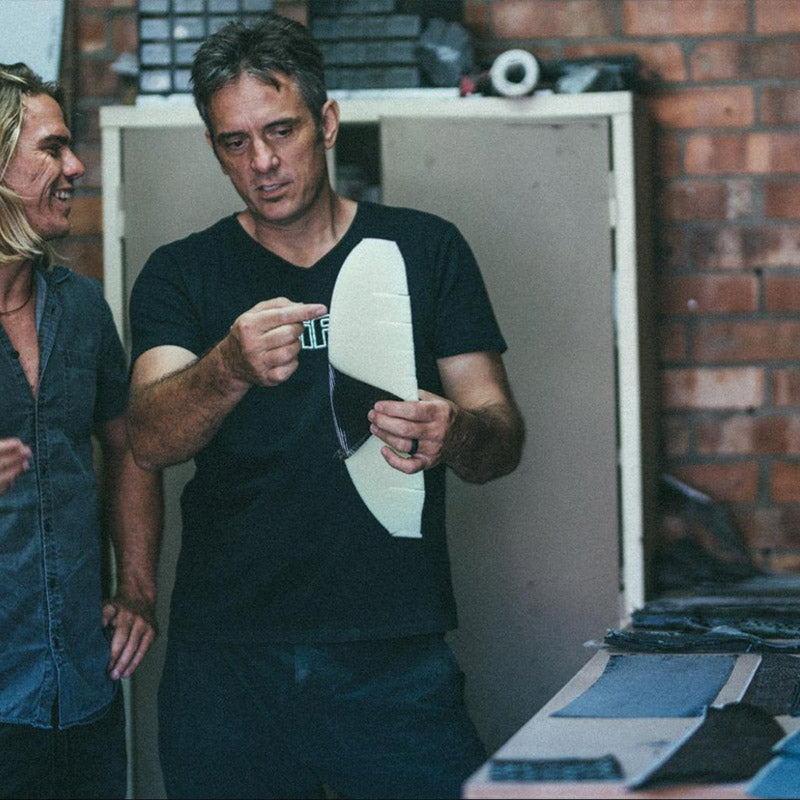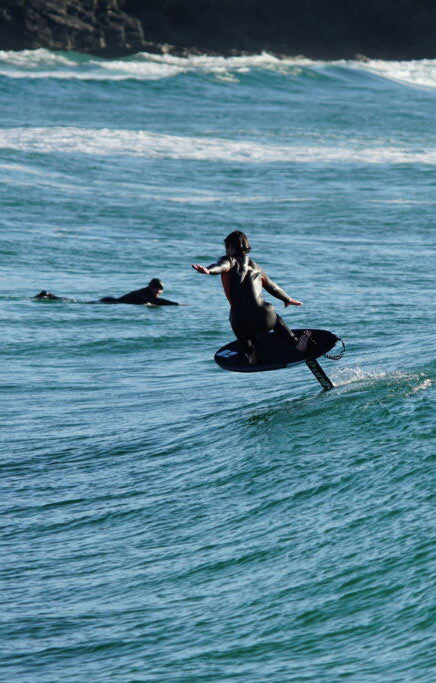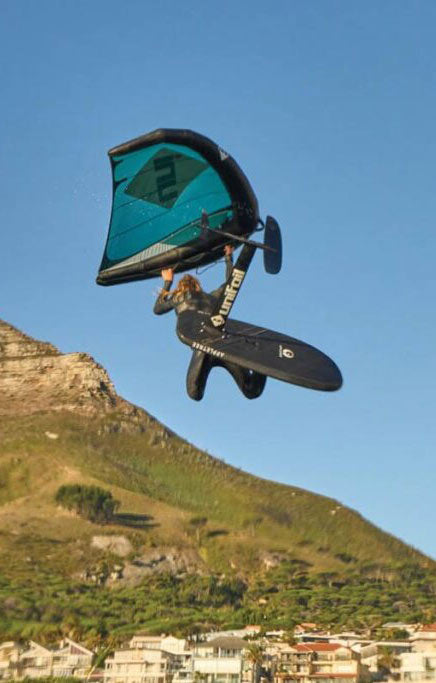
How to choose the right foil for you
When choosing a hydrofoil, you need to consider the following factors:
Your weight
Your skill level
The conditions
Your chosen discipline
Your weight will determine the surface area you require for your foil. Heavier riders will require more square inches/cm for given conditions compared to lighter riders. Depending on your skill level, you may be able to get away with riding a foil with a smaller surface area.
Smaller / thinner generally means faster, but less lift and less stable.
How aspect ratio (AR) determines what foil you should be riding
What is AR? Simply put, this is the ratio between wingspan and surface area. Wingspan is measured from tip to tip. Surface area measured with span and chord (the distance from leading to trailing edges. Foil section, the profile of the foil seen in cross-section, also determines lift.
Low-aspect: Narrower span, thicker foil section, more curvy foil section.
Mid-aspect: A balance of span and chord to provide early lift, stability and speed.
High aspect (HA): Area is spread across a wider span to provide maximum efficiency at the expense of manoeuvrability. Less
chord, thinner foil section, smaller area means the foil can travel at much higher speeds, but also the minimum stall speed is increased meaning the foil has to be ridden faster to keep planing.

Your Journey
For learning and progression a lower aspect aka wing span / larger area foil will provide early lift, meaning you can get off the water earlier and with less speed/ power.
Low aspect (span) wings are often thicker and more curvy, which makes them easy to manoeuvre but also means they have a lower top speed.
Mid-aspect wings, like the Vyper, provide the best balance of agility and early lift without the top-end limits of low aspect foils.
When you are progressing, you want a foil that is predictable and easy to manoeuvre. These characteristics are also ideal for wave riding, freestyle and prone surfing.
More advanced riders, who want to pump, downwind, prone smaller waves, and prone downwind, want a foil with maximum glide and increased speed.
When choosing your foil, be realistic about your skill level and the type of conditions you want to foil in. It is tempting to go for the gear the pros are using, but unless you have the same skills, this will lead to hours of frustration as you struggle to get going.
Prone
Progression and learning. Your journey begins with learning to paddle into waves and get to your feet. For this you want a foil that provides early lift, at low-speed, but that is easy to control and stable.
Pumping
Once you have started to pump and connect multiple waves you will want a more efficient foil that provides more glide to connect more waves. You will require less initial lift so can move to a smaller area and thinner foil section – you will provide lift through pumping and turning.
Surf foils vs HA foils
Foils designed for the surf tend to be mid-aspect as these provide the best balance between stability in the whitewater and turning. The Vyper has a narrower span and down-curved tips to reduce the turn radius on the wave. It’s deeper chord provides stability in pitch (up and down) and makes it easier to drop in on steeper sections of the wave.
HA foils, while not designed for the surf, can also be a great choice but require greater skill as they are less forgiving. Main factors to consider are wing span and stall speed.
HA foils in the < 1,000 sq cm category provide more manoeuvrability but due to their higher stall speed (the minimum speed required to stay “on foil”) they need to be ridden faster and become pitchy in whitewater and are more difficult to recover from a stall.

Wind Wing
Disciplines:
Progression: Early planing, maximum lift at low-speed, stability
Waves: Early lift, turning radius, stability, speed, safety
Freestyle: Easy lift, turning radius, stability, pop (flat water jumping), safety
Freeride: Early lift, glide, speed, stability, safety
Downwind: Maximum glide and speed, turning less important
Conditions:
Flat water: best for learning. Focus on getting on foil (planing), sailing in both directions, gybing and tacking.
Waves: Ideal conditions are either cross-shore wind or onshore where there is a launch spot that takes you out past the waves. More advanced riders also like offshore winds for cleaner wave faces but this adds risk of not being able to get back to shore easily as the wind will take you out to sea. Mid-aspect foils with narrower span are easier to handle in waves, they are more stable, they have more rounded, blunter tips which are less likely to tear a wind wing if they touch it. They provide more drive on the wave and better recovery for breaches and stalls. In the surf you have less time to get going between waves and greater consequences for mistakes, so early lift and predictable handling aree key.
Freestyle: Flat water, pop for jumps, stability for landings, easy lift for recovery in stalls and breaches.
